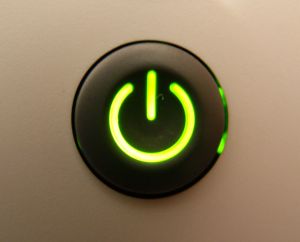In Defense of DLP
 Whether you are in the market for a high definition television set, a high-end projector for your business, or if you are simply trying to figure out whether you should repair or replace your current DLP device, you should know that DLP technology is still the superior technology for high definition displays. DLP technologies are getting smaller, cheaper, and stronger. And, in my opinion, deliver the best bang for your buck.
Whether you are in the market for a high definition television set, a high-end projector for your business, or if you are simply trying to figure out whether you should repair or replace your current DLP device, you should know that DLP technology is still the superior technology for high definition displays. DLP technologies are getting smaller, cheaper, and stronger. And, in my opinion, deliver the best bang for your buck.
The first high-definition television sets (HDTV’s) hit the market in 1998. Since then a number of changes have occurred in the industry. In the beginning DLP quickly set the standard for high quality images and ease of use. A few years later Plasma TV’s became a popular choice amongst home theater buffs but their high price and intensive maintenance schedules frustrated the average consumer. Recently LCD TV’s have garnered much of the attention because they are slim and easy to use. Unfortunately for LCD technology, its picture quality leaves much to be desired when compared to either a DLP or Plasma HDTV set.
If you are looking for a great picture, easy maintenance requirements, and a great price then DLP is the way to go. To understand why, let’s take a look at the technology. DLP technology is based on a chip that contains millions of tiny mirrors. These mirrors are systematically activated when they receive digital signals. This allows them to project a large image onto the screen. The DLP chip is faster than any other imaging technology on the market. This makes it ideal for quickly moving high definition images such as movies, sports, and television shows. The rapid refresh rate generated by the DLP chip produces images with great sharpness, clarity, and contrast.
In addition to making great high definition television sets, DLP technology is also the leading technology in front end projectors. Front end projectors, similar to those used in movie theaters, can fill up to 100-inch screens. In recent years, as DLP projectors became more affordable, they have benefited from an explosion in popularity. Their ability to project an enormous picture from a relatively small device is currently unparallelled. This is why many home theater buffs and business people love front-end projectors for parties, meetings, and trade shows.
The Pros of DLP Technology:
That said, the young sales rep at your local big box store will be quick to point out that DLP lamps have to be replaced every 2-3 years and that DLP TV’s are bulkier than the new LCD’s. This is true however if you already have a DLP television set in your home then it is probably safe to say you have the necessary space requirements. Replacement bulbs for DLP TV’s are relatively cheap and the picture quality from a ten year old DLP TV is still better than any picture produced from a modern LCD TV. If you are considering replacing your DLP display just because the lamp burned out – save your time and money. DLP still delivers the most bang for your buck!

I have yet to see the LED/LCD/Plasma screen that comes close to reproducing the picture and color quality that our ~5 year old Mitsubishi DLP still manages to produce.
We have yet to replace a bulb, though our average use is probably less than most households. (Maybe 20 hours per week on average)